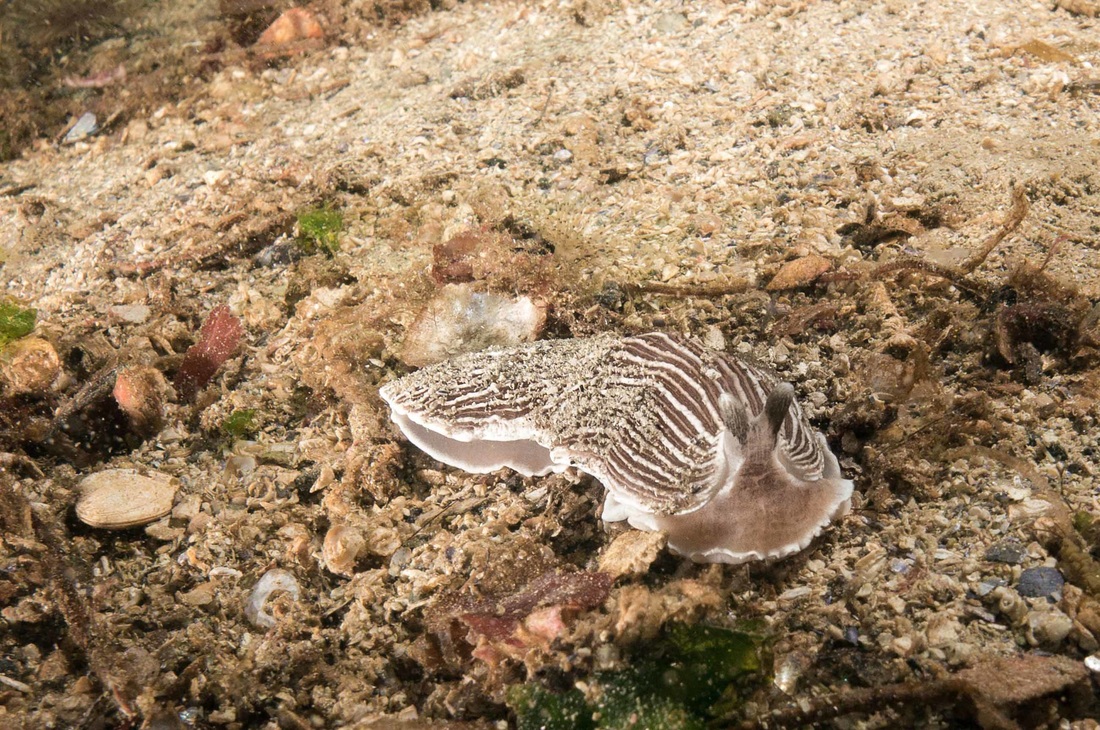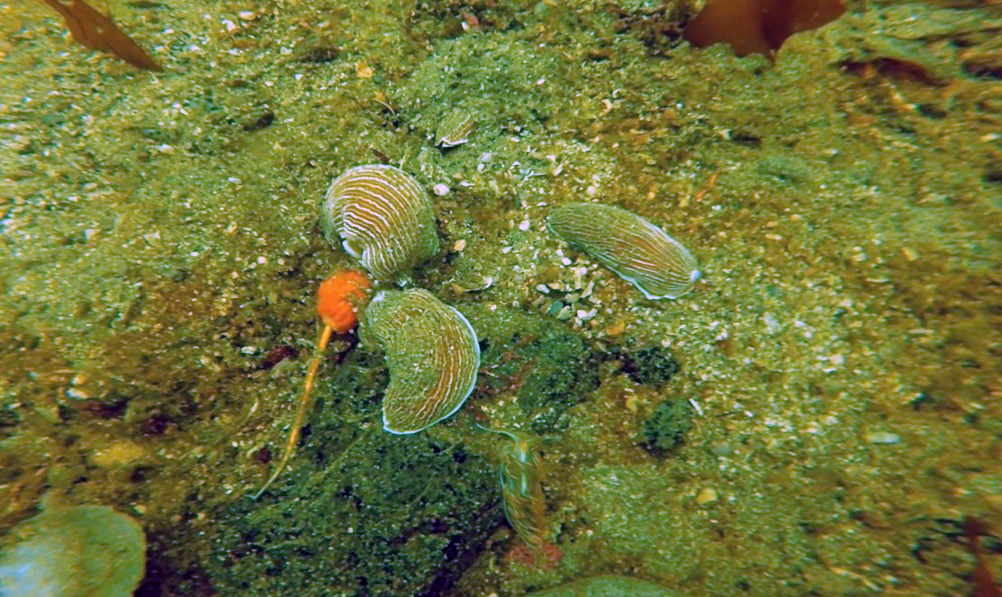Striped nudibranch, California armina • Armina californica
Identification
This distinctive species is striped with thin lines of white and brown. The white stripes are raised, so the nudibranch's back (dorsum) is ridged rather than smooth. The club-shaped rhinophores are the only visible outgrowths projecting from the animal: instead of branching from the dorsum, the gills are hidden in a deep groove between the dorsum and the foot. This nudibranch has an elongated oval shape and measures to 7.5 cm long.
Habitat & Range
The striped nudibranch can be found in sandy and muddy-bottomed subtidal (and occasionally intertidal) habitats to 230 m deep. It may be found buried in sediment, with just its rhinophores visible. Its range extends from the Gulf of Alaska to Panama.
Intriguing Info
This species primarily preys on the orange sea pen (Ptilosarcus gurneyi). Predation occurs both individually and in groups, as seen in the image below. The video below shows the nudbranch's tactic of burying itself in sand while hunting for sea pens to eat.
This distinctive species is striped with thin lines of white and brown. The white stripes are raised, so the nudibranch's back (dorsum) is ridged rather than smooth. The club-shaped rhinophores are the only visible outgrowths projecting from the animal: instead of branching from the dorsum, the gills are hidden in a deep groove between the dorsum and the foot. This nudibranch has an elongated oval shape and measures to 7.5 cm long.
Habitat & Range
The striped nudibranch can be found in sandy and muddy-bottomed subtidal (and occasionally intertidal) habitats to 230 m deep. It may be found buried in sediment, with just its rhinophores visible. Its range extends from the Gulf of Alaska to Panama.
Intriguing Info
This species primarily preys on the orange sea pen (Ptilosarcus gurneyi). Predation occurs both individually and in groups, as seen in the image below. The video below shows the nudbranch's tactic of burying itself in sand while hunting for sea pens to eat.
References
Cowles, D. (2006). Armina californica (Cooper, 1863). Invertebrates of the Salish Sea. Rosario Beach Marine Laboratory. Accessed 25/05/2016.
Lamb, A., and Hanby, B. (2005). Marine Life of the Pacific Northwest [electronic version]. Madeira Park, BC: Harbour Publishing.
Authors and editors of page
Kelly Fretwell (2016).
Cowles, D. (2006). Armina californica (Cooper, 1863). Invertebrates of the Salish Sea. Rosario Beach Marine Laboratory. Accessed 25/05/2016.
Lamb, A., and Hanby, B. (2005). Marine Life of the Pacific Northwest [electronic version]. Madeira Park, BC: Harbour Publishing.
Authors and editors of page
Kelly Fretwell (2016).





